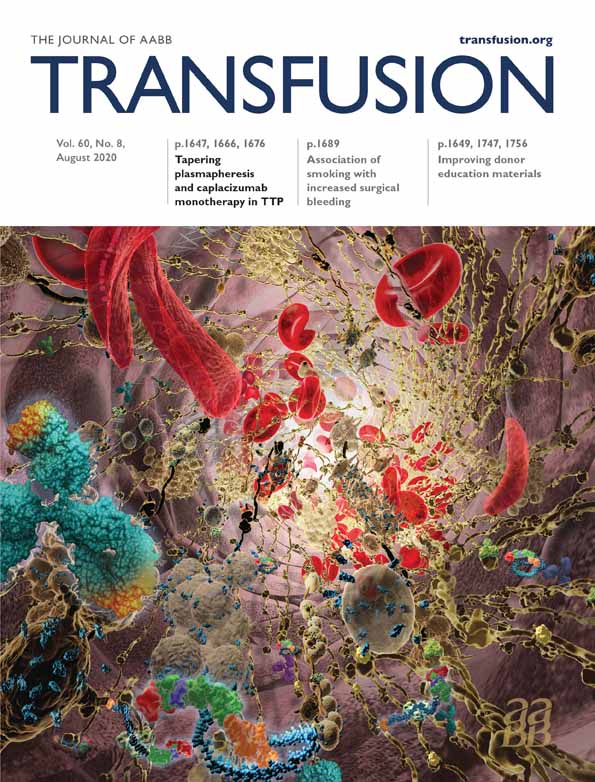Individual- and hospital-level correlates of red blood cell, platelet, and plasma transfusions among hospitalized children and neonates: a nationally representative study in the United States
This work was supported in part by the National Institutes of Health (R01AI120938 and R01AI128779 to A.A.R.T., T32AI102623 to E.U.P., and K23HL151826 to E.M.B.).
Abstract
BACKGROUND
Factors associated with red blood cell (RBC), plasma, and platelet transfusions in hospitalized neonates and children across the United States have not been well characterized.
METHODS
Data from the Kids’ Inpatient Database (KID) 2016 were analyzed. KID is a random sample of 10% of all uncomplicated in-hospital births and 80% of remaining pediatric discharges from approximately 4200 US hospitals. Sampling weights were applied to generate nationally representative estimates. Primary outcome was one or more RBC transfusion procedures; plasma and platelet transfusions were assessed as secondary outcomes. Analysis was stratified by age: neonates (NEO; ≤28 d), and nonneonates (PED; >28 d and <18 y). Multivariable logistic regression was used to estimate adjusted odds ratios (aORs) and 95% confidence intervals (95% CIs).
RESULTS
Among 5,604,984 total hospitalizations, overall prevalence of transfusions was 1.07% (95% CI, 0.94%-1.22%) for RBCs, 0.17% (95% CIs, 0.15%-0.21%) for plasma and 0.35% (95% CI, 0.30%-0.40%) for platelet transfusions. RBC transfusions occurred among 0.43% NEO admissions and 2.63% PED admissions. For NEO admissions, RBC transfusion was positively associated with nonwhite race, longer length of hospitalization, highest risk of mortality (aOR, 86.58; 95% CI, 64.77-115.73) and urban teaching hospital location. In addition to the above factors, among PED admissions, RBC transfusion was positively associated with older age, female sex (aOR, 1.10; 95% CI, 1.07-1.13), and elective admission status (aOR, 1.62; 95% CI, 1.46-1.80). Factors associated with plasma and platelet transfusions were largely similar to those associated with RBC transfusion, except older age groups had lower odds of plasma transfusion among PED admissions.
CONCLUSIONS
While there is substantial variability in the proportion of neonates and nonneonatal children transfused nationally, there are several similar, yet unique, nonlaboratory predictors of transfusion identified in these age groups.
CONFLICT OF INTEREST
The authors have disclosed no conflicts of interest.




